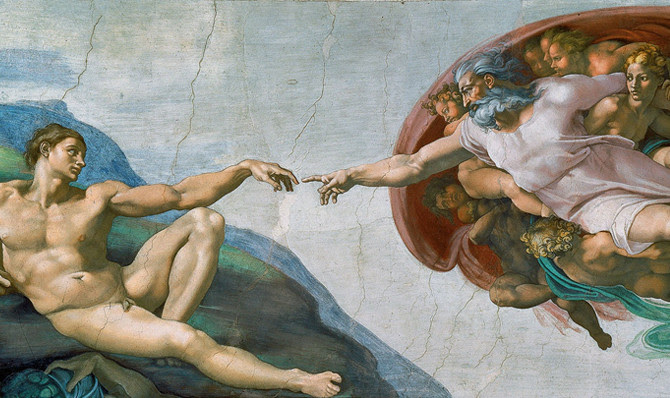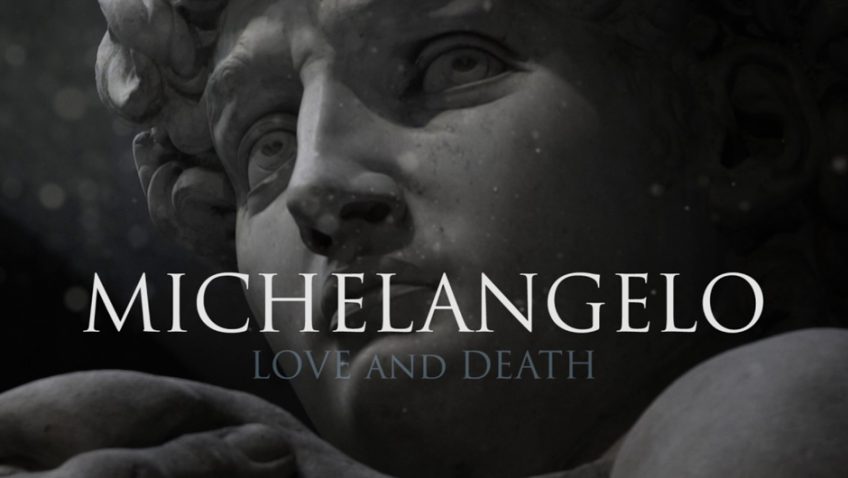Joyce Glasser reviews Michelangelo – Love and Death – Event Cinema – June 13, 2017 (PG)
If you are not saving the world on Tuesday, 13 June, there is no excuse not to be a local cinema feasting your eyes – and your soul – on Michelangelo – Love and Death. Producer/co-writer Phil Grabsky and co-writer/director David Bickerstaff are the team behind the Exhibition on Screen series that brings art exhibitions from around the world into your local cinema. Michelangelo – Love and Death, is not an exhibition but an homage to a Renaissance master and arguably the most famous artist in the Western world.
The documentary features Michelangelo’s major sculptures, frescoes, paintings, architectural designs and drawings, shot in Ultra HD 4K to ensure that that everything – down to the veins and cuticles in the marble hands of David – is clear. We travel to Florence, Rome, the Vatican, and to the Carrara marble quarry guided by a truly impressive selection of ‘talking heads.’ As art critic Jonathan Jones points out, as we look at his works, our sense of awe is ever increasing. He created such beauty although he was always dealing with the darkest and most difficult thoughts: what it is to be alive with the knowledge of mortality.
Fortunately for posterity, and for the filmmakers, Michelangelo Buonarroti was also a poet and letter writer. His poetry – even his love poetry written to several special young men in his life – uses imagery from the artist’s craft. Michelangelo was also the first celebrity artist, so famous during his lifetime (he had completed his famous Pieta and David before the age of 30) that he had two contemporaneous biographers. The best known is Giorgio Vasari, Europe’s first art historian and biographer of artists, who claims to have been on ‘friendly terms’ with the master. The second is Ascanio Condivi, whose ‘The Life of Michelangelo’ is also quoted from in the film.
Michelangelo was born in 1475 in Caprese, Tuscany although shortly after his birth the family moved to Florence. As Michelangelo’s mother was frequently ill (she died when he was 6, leaving six young sons), he was sent to live in the quarry town of Settignano. As fate would have it, his nanny’s husband was a stonecutter. Vasari quotes Michelangelo: “If there is some good in me, it is because I was born in the subtle atmosphere of your country of Arezzo. Along with the milk of my nurse I received the knack of handling chisel and hammer, with which I make my figures.”
More inspiration and harder training would come soon to the boy who was bored with school and only wanted to copy paintings in the local churches. His father, a failed banker and judicial administrator, apprenticed the 13-year-old to the respected artist Ghirlandaio who, recognising the boy’s talent, sent him off to Lorenzo de’ Medici’s Academy for young artists. Lorenzo the Magnificent, the de facto ruler of Florence, soon took the boy under his wing. The film provides fascinating analyses of his two famous teenage reliefs: Madonna of the Steps (1490–1492) and Battle of the Centaurs (1491–1492).
Since Michelangelo lived and worked until age 88, the film has to cut corners, particularly in the ‘Love’ department. We do learn that Michelangelo avoided the death penalty for his illicit homosexuality by professing the neo-platonic doctrine that loving physical beauty was the way to human redemption. Other chapters that are missing include the rivalry with Raphael for the Vatican commissions and – the subject of a major exhibition at the National Gallery until 18 June – his collaboration with the artist Sebastiano del Piombo. The National Gallery exhibit contains an admirable replica of the astonishing masterpiece discussed in detail in the film, The 1498-99 marble Pietà in the round.
Such was Michelangelo’s reputation, that when the French Cardinal of Rouen wanted to leave a memorial of himself in Rome, he asked the 23-year-old Michelangelo to do it. The artist Tania Kovats does an excellent job describing the genius of the sculpture. ‘Her strength at his moment of weakness is so emotionally powerful that she becomes the symbol of the Mother Church.’ This was not the grief stricken, hysteric of German pietas, but a serene and beautiful young woman.
The filmmakers bring in Peter Abrahams, Professor of Clinical Anatomy at Warwick Medical School to tell us about the artist’s knowledge, and increasingly expressive use of anatomy, for which he remained unrivalled. Both he and Leonardo dissected bodies 50 years before scientists did soon a serious basis.
We also hear from Francesca Nicoli, an expert on Carrara Marble, although her explanation might be a tad too technical. What we take home is that when you start chipping bits off an expensive block of marble, you can’t put it back. This worked to Michelangelo’s advantage in the case of David. For 40 years an abandoned block of marble lay dormant in the office of public works in Florence. A project to use it was revived, and Michelangelo abandoned his painting of the Entombment (now in the National Gallery, London) to win the commission. While he worked on his statue of the Biblical underdog David in secret Florence talked about little else. Michelangelo’s challenge was to find room since the marble had already been worked. The solution was to remove David’s clothes – risqué for a public statue.
The film is pretty good about explaining why marble was both Michelangelo’s greatest asset and his bête noire. One reason there are so few completed works by Michelangelo was down to the difficulty of working with marble and the other was his popularity. When a pope calls you to Rome to work on the Sistine Chapel, you drop what you are doing and go.
The documentary will be shown in selected Picturehouse, Everyman, Curzon, Vue, Odeon and Cineworld venues – as well as in local independent cinemas on Tuesday 13 June. Check the website for a list of screens and times.
http://www.exhibitiononscreen.com/en-uk/our-films/season-4/michelangelo-life-and-love
You can watch the film trailer here:




